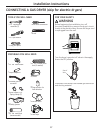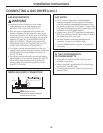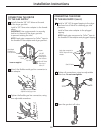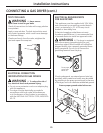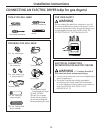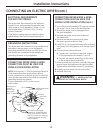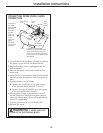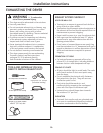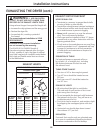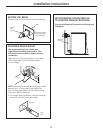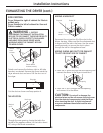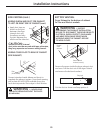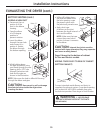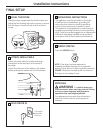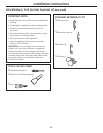
Installation Instructions
25
USING FLEXIBLE METAL DUCT
FOR TRANSITION VENTING
Rigid or semi-rigid metal ducting is
recommended for use as transition ducting
between the dryer and the wall. In special
installations when it is impossible to make a
connection with the above recommendations, then
a UL-listed flexible metal transition duct may be
used between the dryer and wall connection only.
The use of this ducting will affect dry time. Only
those foil-type flexible ducts, if any, specifically
identified for use with the appliance by the
manufacturer should be used. In the United States,
the duct must comply with the Outline for Clothes
Dryer Transition Duct, Subject 2158A.
If flexible metal transition duct is necessary,
the following directions must be followed:
• Use the shortest length possible. The total length
of flexible metal duct shall not exceed 2.4 m.
• Stretch the duct to its maximum length.
• Do not crush or collapse.
• Never use flexible metal ducting inside the wall
or inside the dryer.
• Avoid resting the duct on sharp objects.
• Venting must conform to local building codes.
FOR TRANSITION VENTING
(DRYER TO WALL), DO:
•DO cut duct
as short as
possible and
install straight
into wall.
•DO use elbows
when turns are
necessary.
DO NOT:
•DO NOT bend or
collapse ducting.
Use elbows if
turns are
necessary.
•DO NOT use
excessive
exhaust length.
Cut duct as short
as possible.
•DO NOT crush
duct against
the wall.
•DO NOT set
dryer on duct.
Elbows



